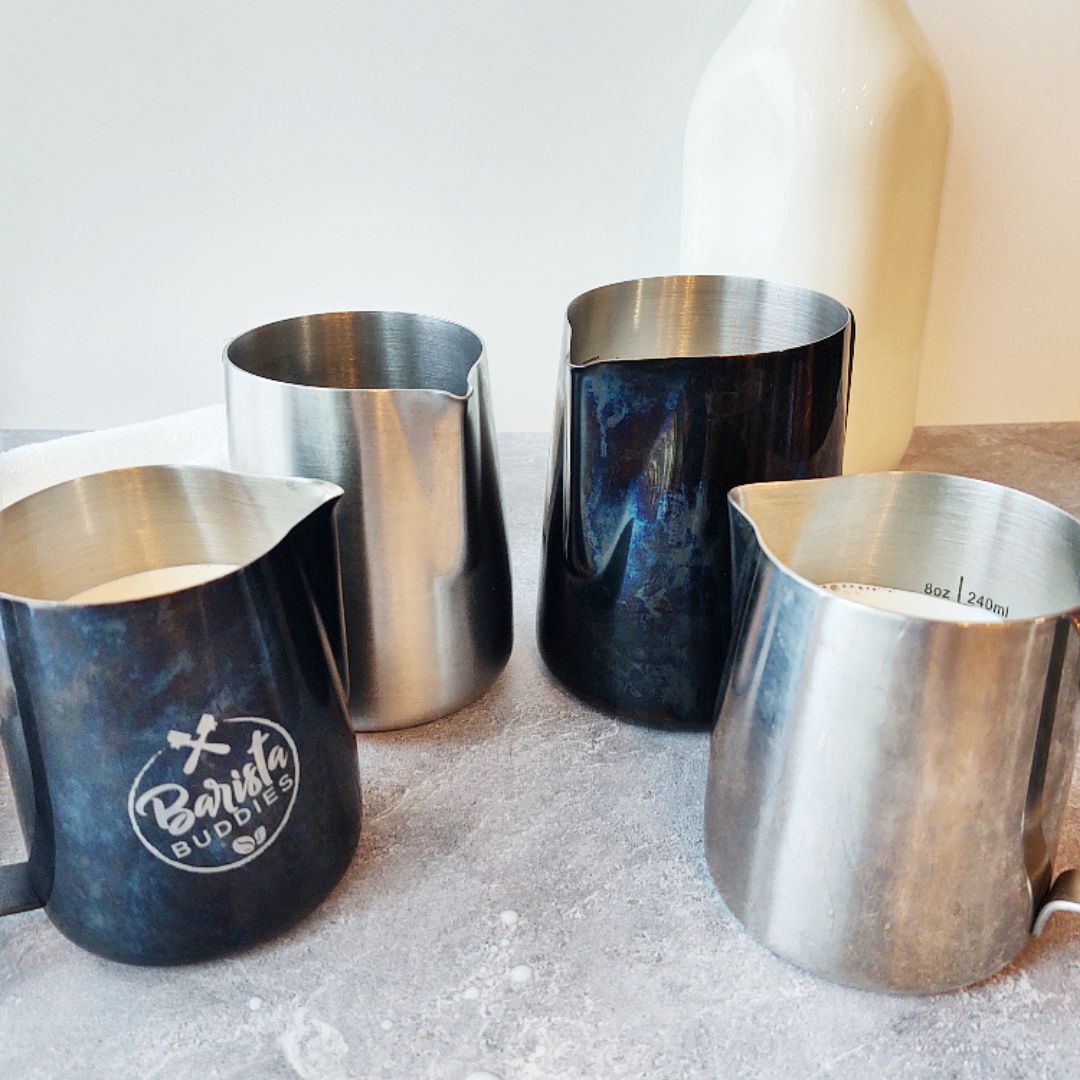Tulips, swans, and hearts, oh my!

How to choose a pitcher to practice your latte art.
Picture this… you stroll into your favorite coffee shop, vibey music playing in the background. You order your favorite latte and sit down at a table by the window. A friendly server brings you your drink and you can’t help but smile at the perfectly designed art splayed across the top. Perfection.
You think to yourself. I want to learn how to do that. But anyone who has tried knows that those beautiful tulips and stacked hearts are not easy to create.
There are a few things that make for great art – the pitcher and the micro-foam being at the top. So let’s talk about choosing the right pitcher or jug as they are also called. There are hundreds of styles to choose from – all have different shapes, designs, colors, weights, and materials so where do you start?
The first thing to consider is size. The two main sizes are 12 oz and 20 oz. As a general rule you want a pitcher that is about 2-3 times the size of the cup you will be pouring into. Your milk should sit just below the base of the spout, which is about one-third of the way up the jug. If you fill it too high, the milk will overflow when you are steaming it, and if you fill it too low the steaming wand won’t be submerged properly to achieve the desired milk consistency for latte art.
Still related to size, is the width. The jug needs to be wide enough so that you can create a whirlpool, which breaks down the bubbles in the milk and allows it to be evenly heated and aerated creating that finely textured milk that is velvety smooth and looks like shiny wet paint. If the milk pitcher is too narrow there won’t be enough room for the milk to move around.
The next consideration is spout shape. The two main shapes are “classic” which are shorter and rounder, while the “sharper” spouts which are narrower and more pointed.
The classic spouts are good for beginners. They help with smooth, consistent pours. These are good for the basic heart design. The sharp spouts give more control for detailed designs such as rosettas or swans and are good for the more experienced.
But wait, there’s more. There are both handled and handleless pitchers. Whether or not you want a handle depends on how you like to hold the pitcher when you pour. Some prefer the handleless for more control and precision because it allows them a better grip towards the top of the pitcher. If you are considering a handleless pitcher keep in mind that the jug heats up and you need to be able to hold this pitcher when steaming milk to high temperatures.
The next consideration is the material of the pitcher. The most common material is stainless steel which not only holds up well to be being heated to high temperatures, but also retains heat well. There are some with Teflon coating which can help with handling the hot pitcher and may be helpful.
The last thing to consider is its design. Design not only involves function but form as well. It’s gotta look good, and something that you’ll not only enjoy using, but be proud to display.
Here's to your beautiful latte art.